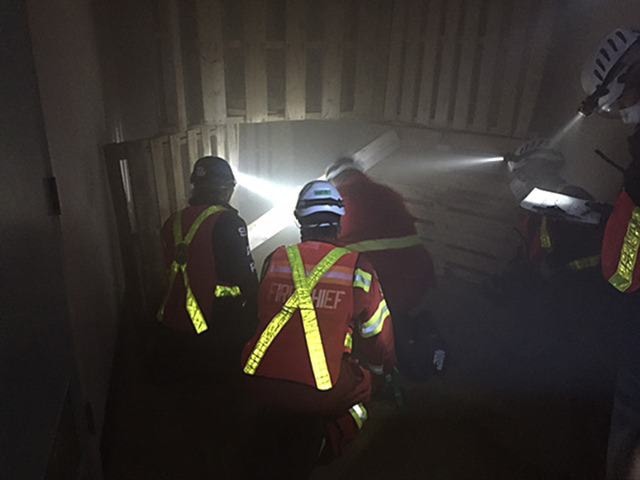Erin Haluschak
Record Staff
It's only a matter of when – not if – a major earthquake will hit the Comox Valley, and with only a few trained teams around the Island, Paul Berry hopes to make emergency personnel more prepared.
Berry is both the district principal of health and safety for School District 71 and the information officer/Search And Rescue (SAR) manager for Comox Valley Ground Search and Rescue, and last week helped organize a unique course for emergency crews to conduct search and rescues in school buildings post-earthquake.
“The course came from a need out of a number of different fronts,” he explained. “On the school district level, we want to be prepared to react after an earthquake or a natural disaster. Our SAR team here and a local fire department saw the need to develop their skill set and training.”
The course was a first in the province, with co-operating agencies working together, and a first for the SAR team, which will likely be tasked with the rescue work following a natural disaster.
Organized at the former Comox Elementary building, the site was set up as a post-earthquake building with significant structural damage, Berry explained, in order to emulate responses to sites with a high volume of individuals.
He added a recent report from the auditor general was very critical of the province and Emergency Management BC with their level of preparedness response post-disaster.
“Prior to the release of the report, our local SAR team began asking how are we going to respond (following a natural disaster)? What skill sets do we need and how can we deploy our team safely?”
The week-long training session covered topics such as triage, doing a rapid damage assessment, doing room-by-room assessments and finding the best way of saving the greatest number of people in the least amount of time.
There is also a psychological element involved with the training, Berry noted, as rescuers searching a site post-natural disaster may have to make assessments and decisions not to rescue if an area or site is too difficult or hazardous to enter.
With 27 members now qualified at the light urban SAR level and some school district employees along with some fire department members, Berry continues to urge the public to prepare themselves and create an earthquake plan.
“Have pre-determined check-in points and tell everyone in your home or business about the plan (and) have a significant stockpile of supplies.”
He also encourages members of the community to attend a free emergency preparedness session offered by their local neighbourhood or fire department.
Looking ahead, Berry said he hopes to work regularly with other SAR teams across the Island and province and continue training with SD71.
He noted many staff, including electricians and carpenters for the school district, have trained in light urban SAR as they don't know where they might be when a natural disaster occurs.
“They might be responding to the closest school, and they can lead other staff in what they need to do,” he said. “After disasters, the vast majority of rescues occur with regular people off the street.”
Berry added with 22 school sites and the hospital, in the many hours after an earthquake or disaster, “we need to be able to take care of our own.”
A second, larger scale training scenario is schedule for May for all SD71 school administrators and senior staff.
photos@comoxvalleyrecord.com
